This started as a simple note taking log, but ended up rolled into a sort of work diary. Notes can reflect a lot of how someone’s mind works. I hope this is helpful to others early or further into their work/note career.
Why I take notes
I have known early in my career that my brain is not very reliable for keeping track of tasks and keeping track of information. I have to write down everything I am working on. Working in an engineering environment can be hectic, so to perform well, you have to keep track of the small tasks as well as the larger ones.
For me, sketching/writing things out also helps with unloading my brain, something on paper can be removed from my working memory so to say. The paper acts as extra memory to work through problems.
The System
The Bullet Journal system was an interesting choice, it allows tracking and reflection of tasks and points made. I’ve developed my own bullet journal system, that has mostly been the same in the last 10 years.
I actually have all my notes from the last 10 years! some of them have been scanned in, and some still in notebook form. This post is mostly a look back into my note taking system.
Any working system is going to be adjusted as you go and change with your needs. The system has to suit the process and not the other way around. So anything that adds friction has to go, unless the friction makes you do things better.
The Start: A budding system
Taking notes was not new for me in this point, but my aim was to evolve to a higher professional level. I really felt I had something to prove and put a lot of energy into work.
Block 1 okt 2015 - okt 2016
174 pages A4
At the start of this job, I started with an lined A4 ring book and a somewhat loose bullet journal system. Most of the basics are still there today. I write down tasks whenever I get them somewhere in the notebook. Any notes are made in between. This is great for flexibility. I might not make any notes some days, or 2 pages of sketches on the next. Every month I go through all the notes of previous month and rewrite them if they are not completed, this is a Log. This moment is also good for putting the tasks into my mind again.
- squares are tasks to be executed
- circles are tasks executed by someone else that I’m waiting on
- When completed the task is ticked
- If I’m making a Log then when rewriting it gets an > arrow in the current place.

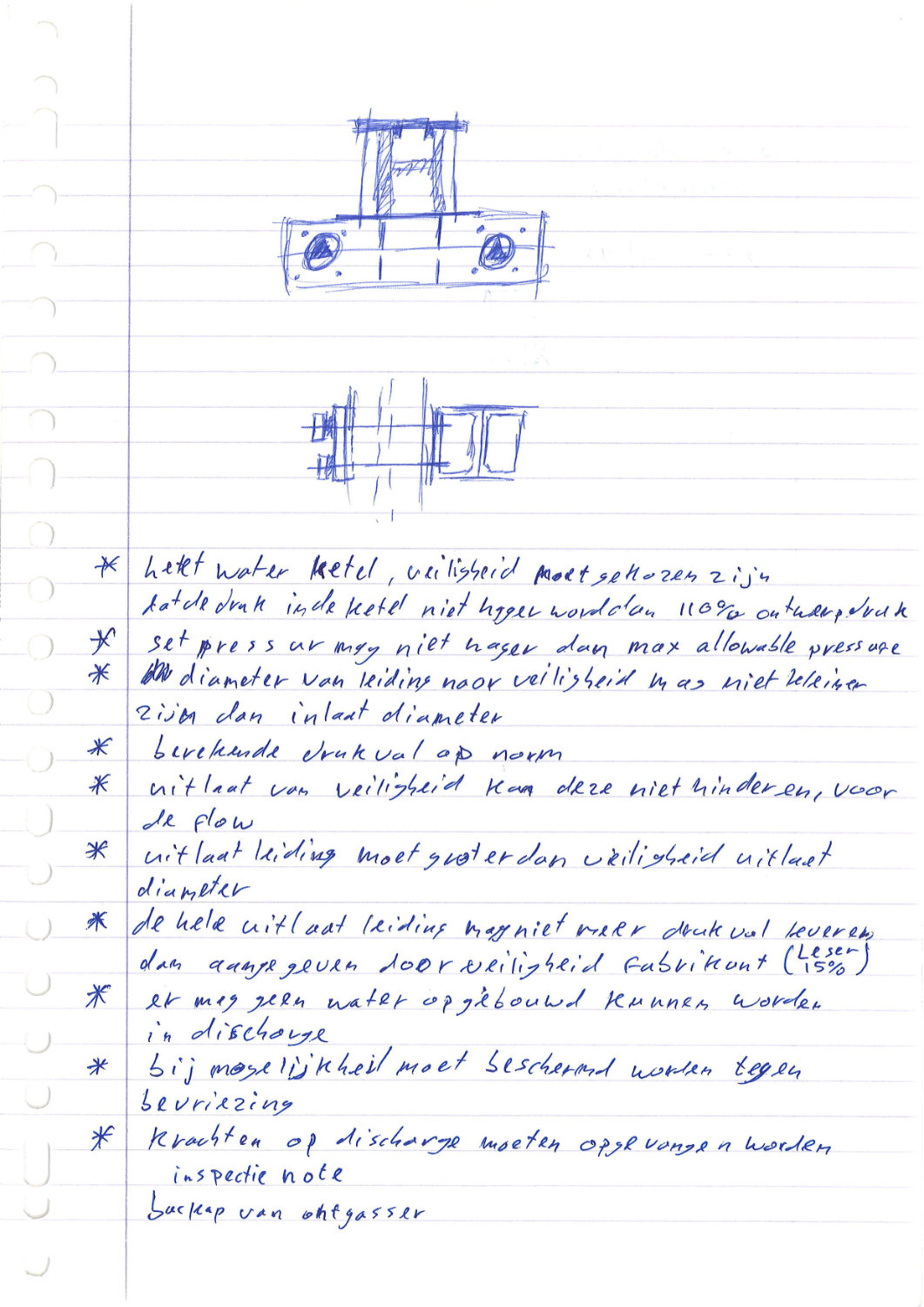
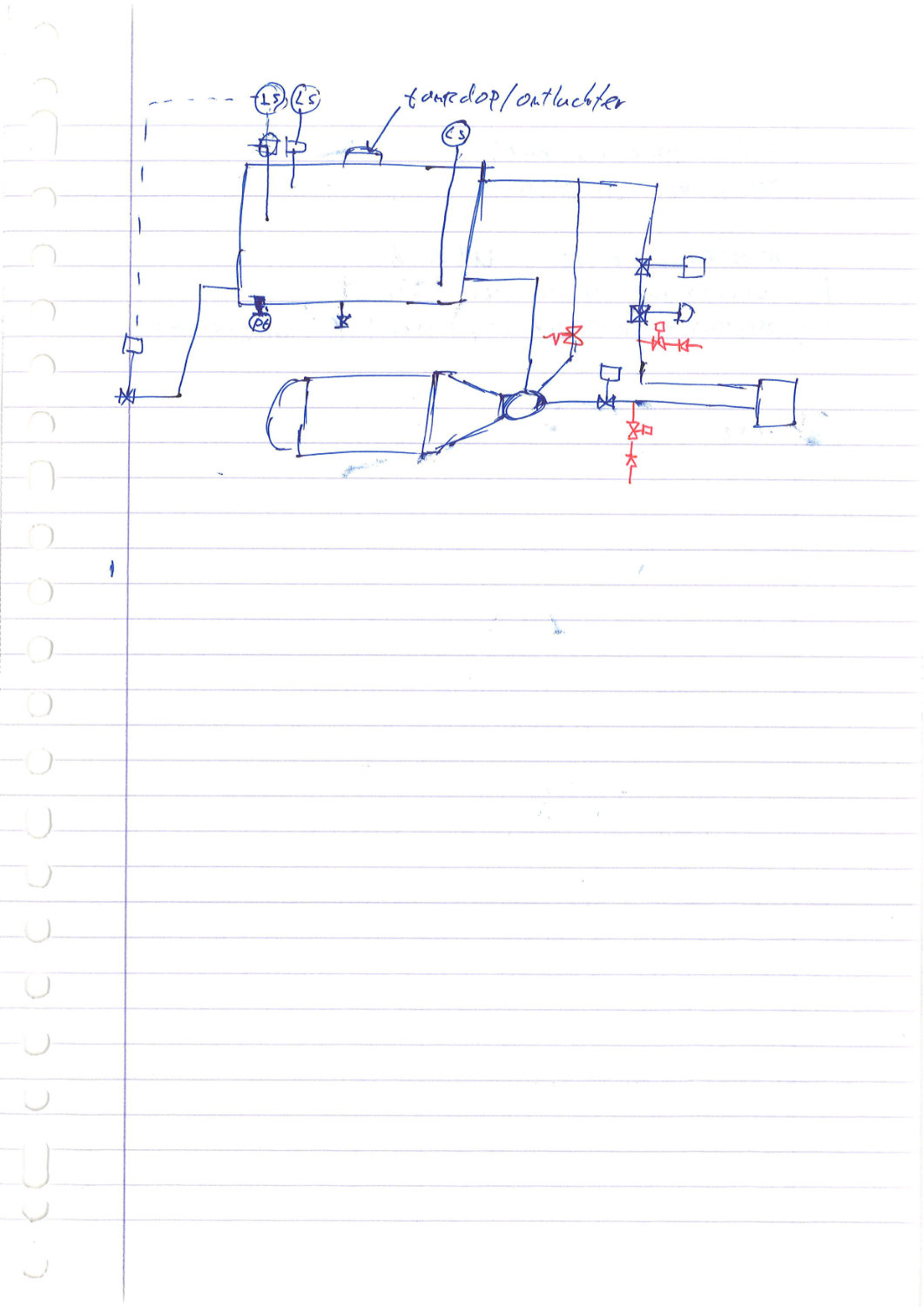
Block 2 okt 2016 - apr 2017
142 pages A4, slightly different A4 ringblock
The system was still the same, with some variability with when I make a log. once every maybe 3 weeks? I would often also add tasks to the same list, instead of putting it where ever I am in the notebook. I also started using a fountain pen near the end, the generic paper would bleed through often.



The Ritual, structure and growth
This was my golden era of notes. You would always see me walking around and in meetings with that small black notebook and write everything down. This was my most consistent period of bullet journaling.
Block 3 04-2017 > 03-2018
187 pages A5, Rhodia A5 webnotebook
I was travelling around often so I wanted something more portable that didn’t look mangled after putting it in my bag every day. I got a Rhodia A5 hardcover notebook with dots. An added advantage that it handles fountain pens a lot better than the cheap paper before.
With this notebook I did expand to a more bullet journal system.
- I numbered every page by hand (192).
- It has an index in the start with page numbers of references.
- A future log for every month
- I made a kind of calendar planner, but I didn’t do anything with that :D The monthly log got more consistent, I split it into a monthly planner with just a list of every day of the month. I put my worked hours there and anything special that day. Like a day off or if I went to a client with how many kilometers I drove. A second monthly log page for general work and a third for project work. As for the notes part, I would put down the current date whenever there was a note on that day. An addition to the system is a horizontal line (or crossed through) if I don’t have to do the task.
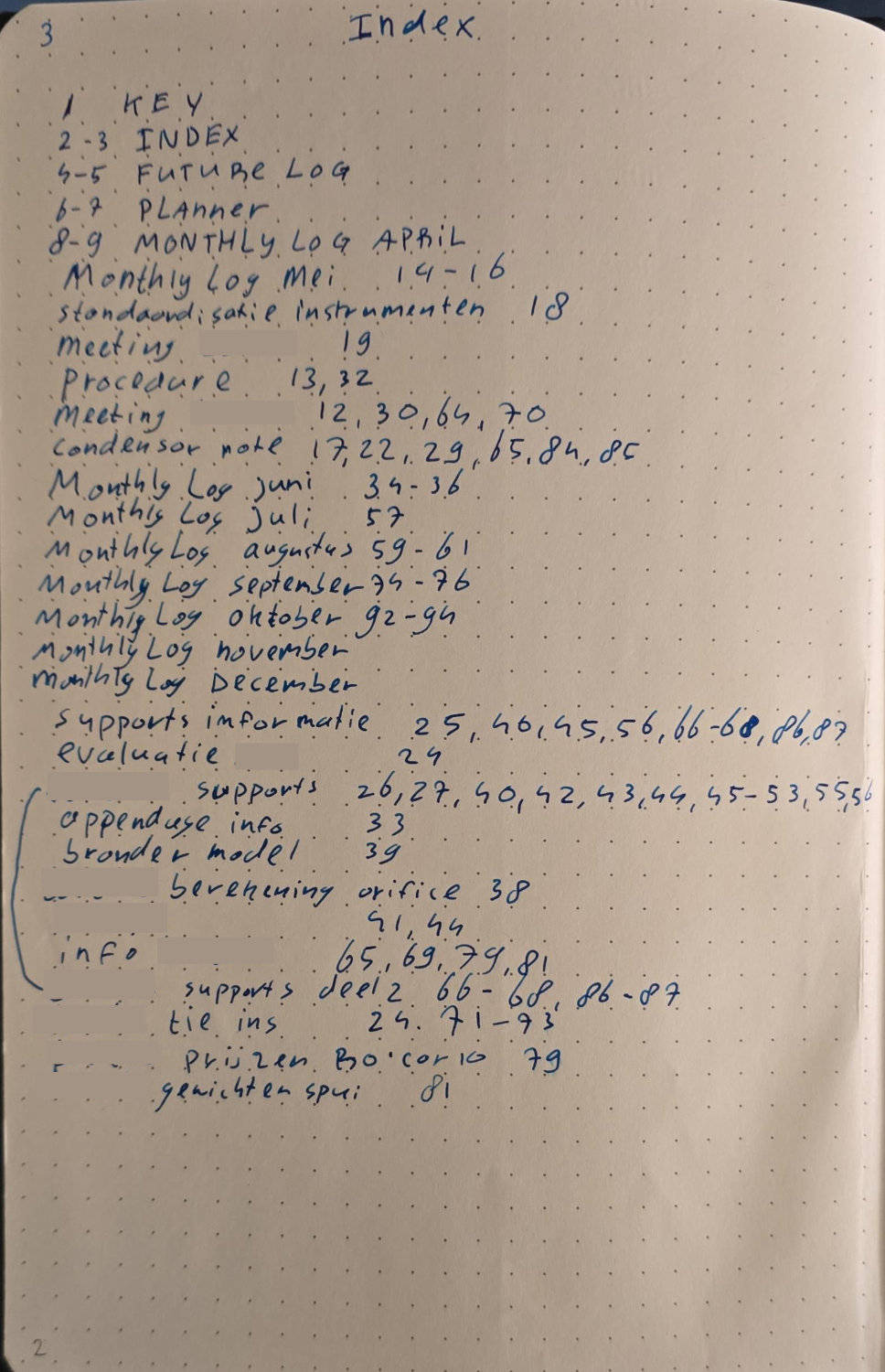

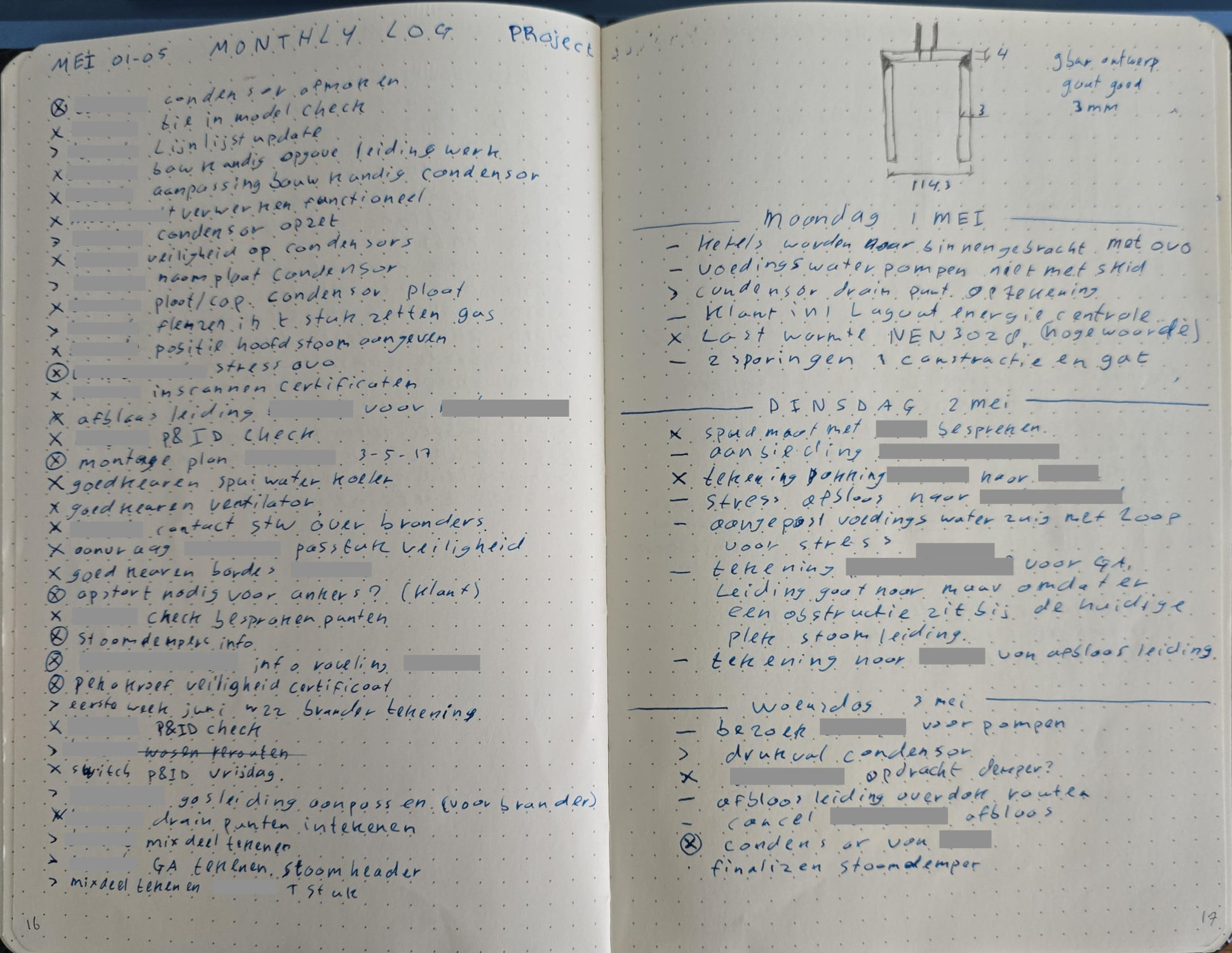
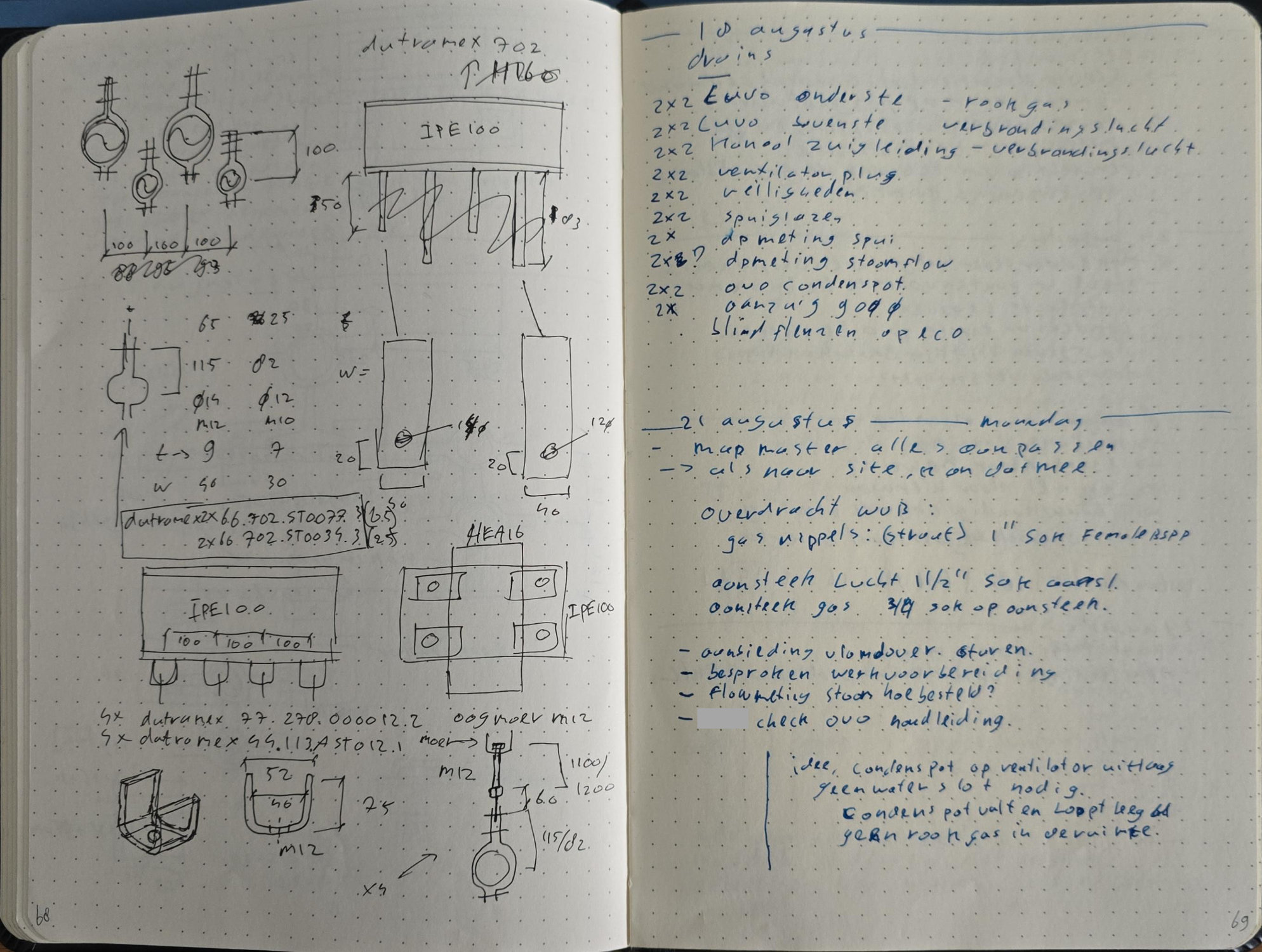
Block 4 03-2018 > 01-2019
192 pages A5, Rhodia A5 webnotebook
Just a continuation of the last notebook. same A5 rhodia webnotebook. Slightly different system of bullet that was already somewhat happening in the previous notebook. Monthly logs where getting more sparse.
- A simple Dot for a task, easier to do than making a square.
- horizontal line for a note, makes it easier to distinguish between other tasks. I often do this for writing down project notes. I sometimes also do this for documenting I did something that day.
- Circle for waiting on answer/task
- Arrow for moved/rewritten task
- cross for completed task
- Vertical line | for when the task is not needed anymore.
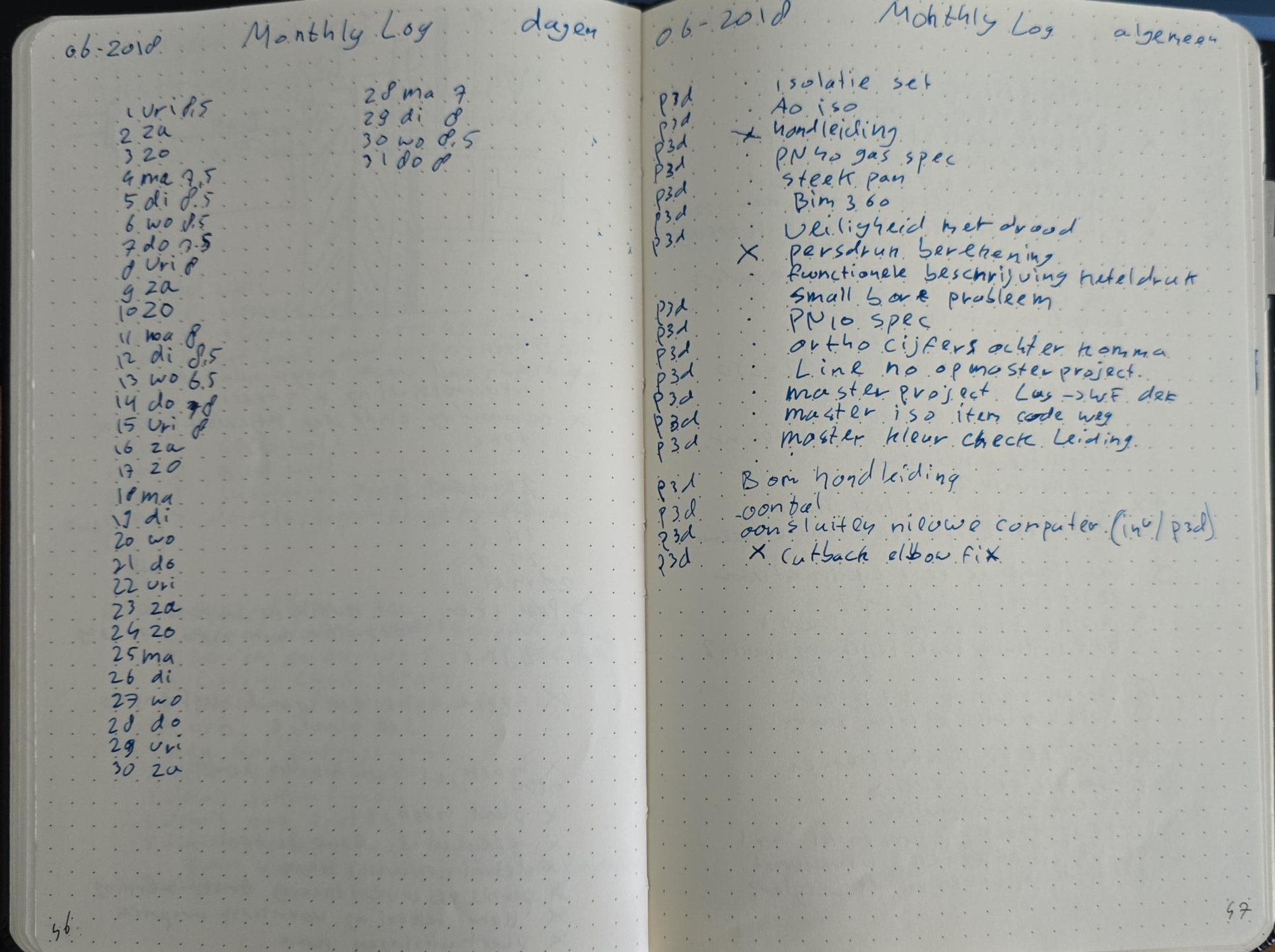


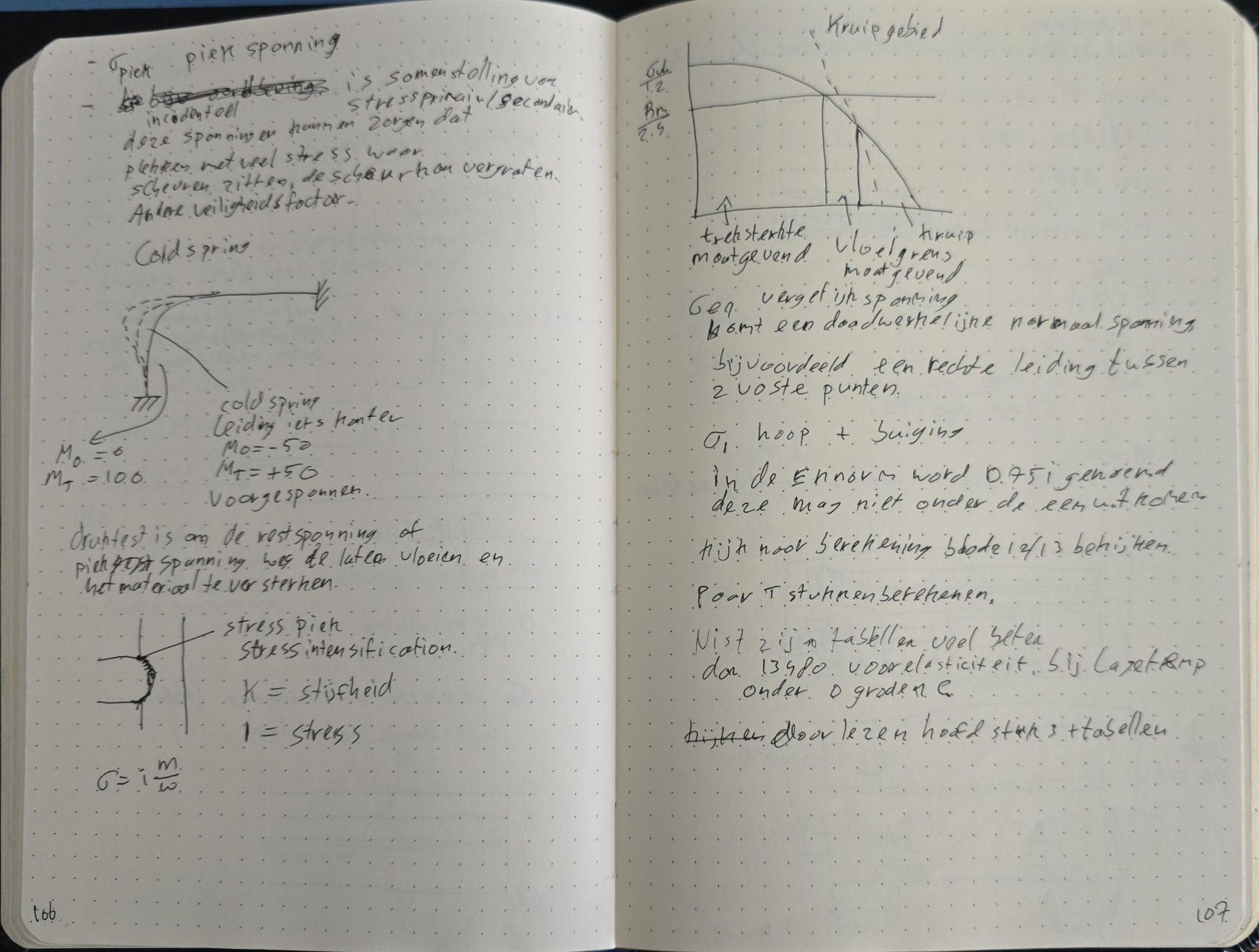
Block 5 02-2019 > 10-2019
192 pages A5, Rhodia A5 webnotebook
Same A5 notebook, same system. I was really going through this one quickly! filled 180 pages in 8 months. But monthly/weekly logs where sparse. A weekly pressure vessel course was the cause of many of those extra note pages.
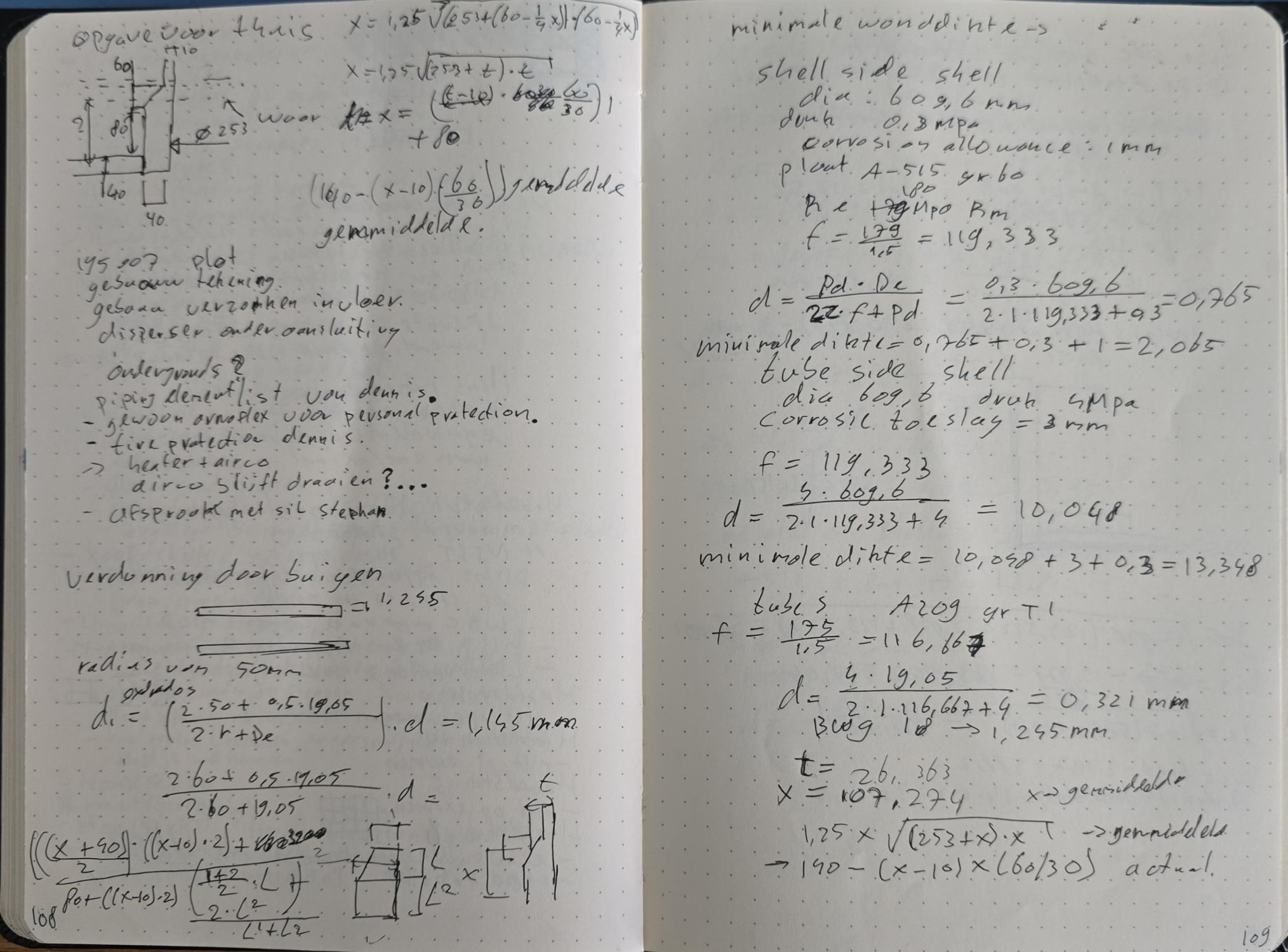
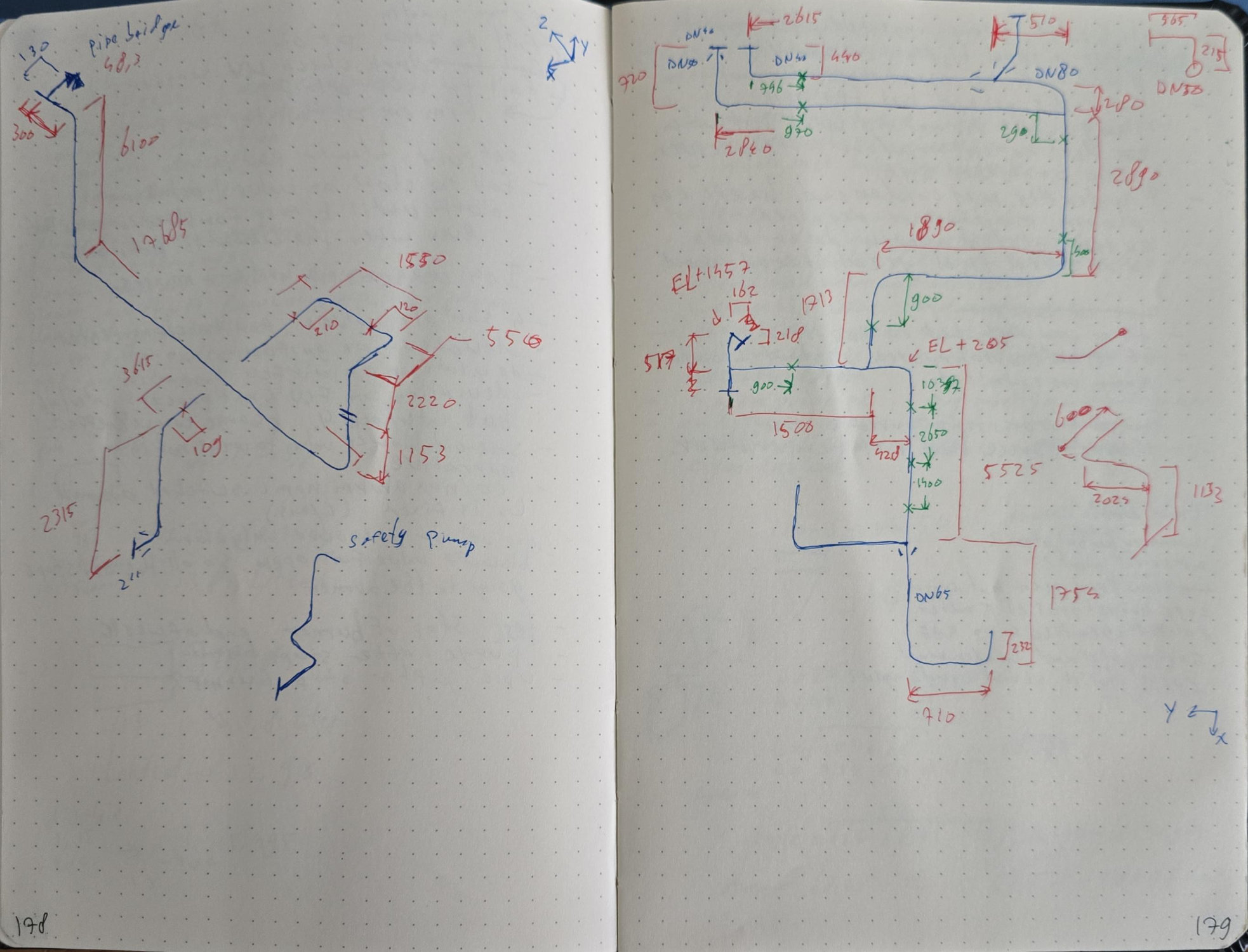
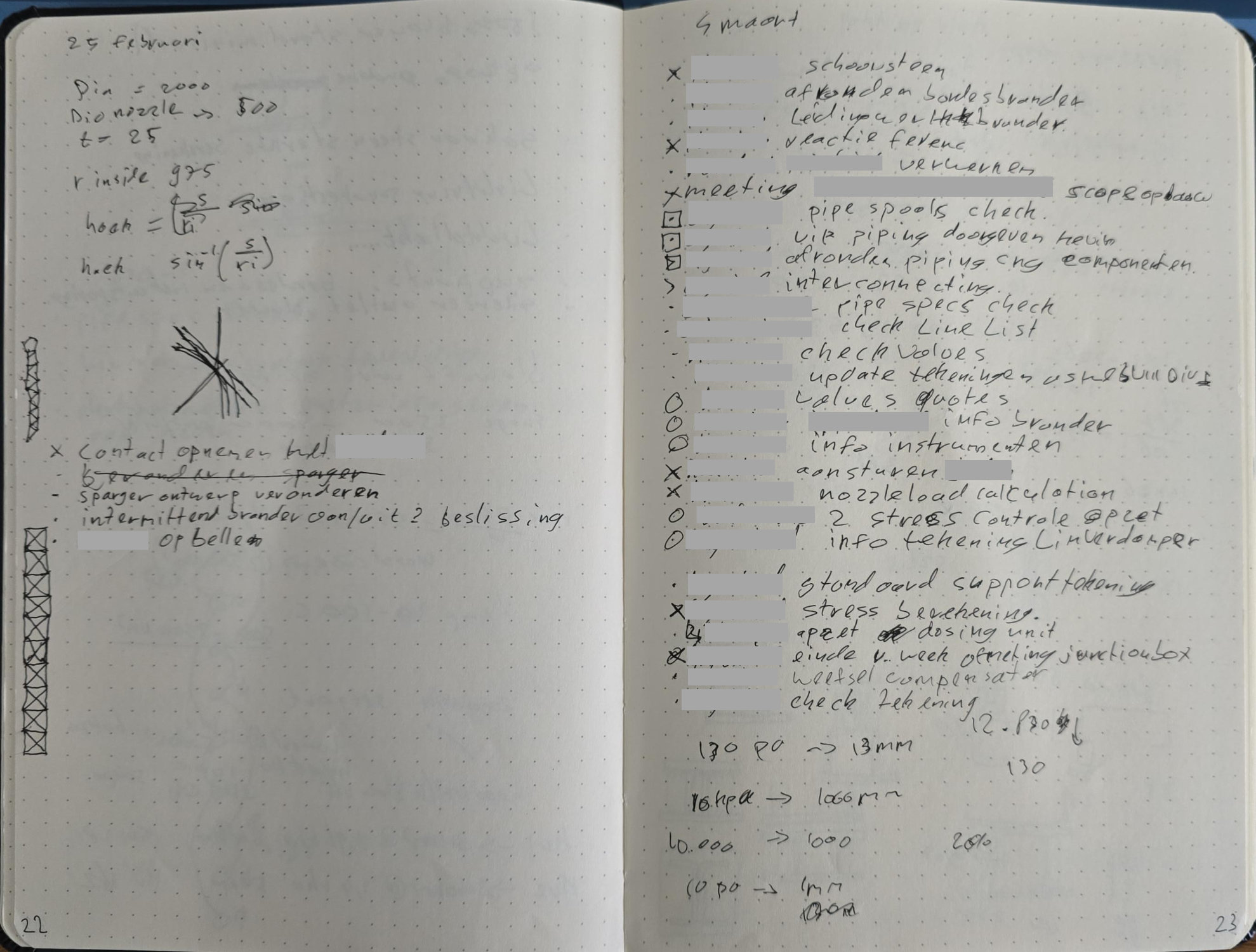
Digital promise to Decline
As I was slipping, with that virus in 2020 making everything worse, I set my hopes on the switch to digital. But that didn’t go as planned.
Block 6 11-2019 > 04-2020
99 pages A5, Leuchturm1917 bullet journal
I switched to a different notebook! No more manual page numbers and some built in pages (that I don’t use). I didn’t finish this notebook, looking at the end date for this notebook (and 100 pages in), there where some big changes in the world. But not only that, it was already stewing in my head. I wasn’t really following my own system as well as I wanted to.


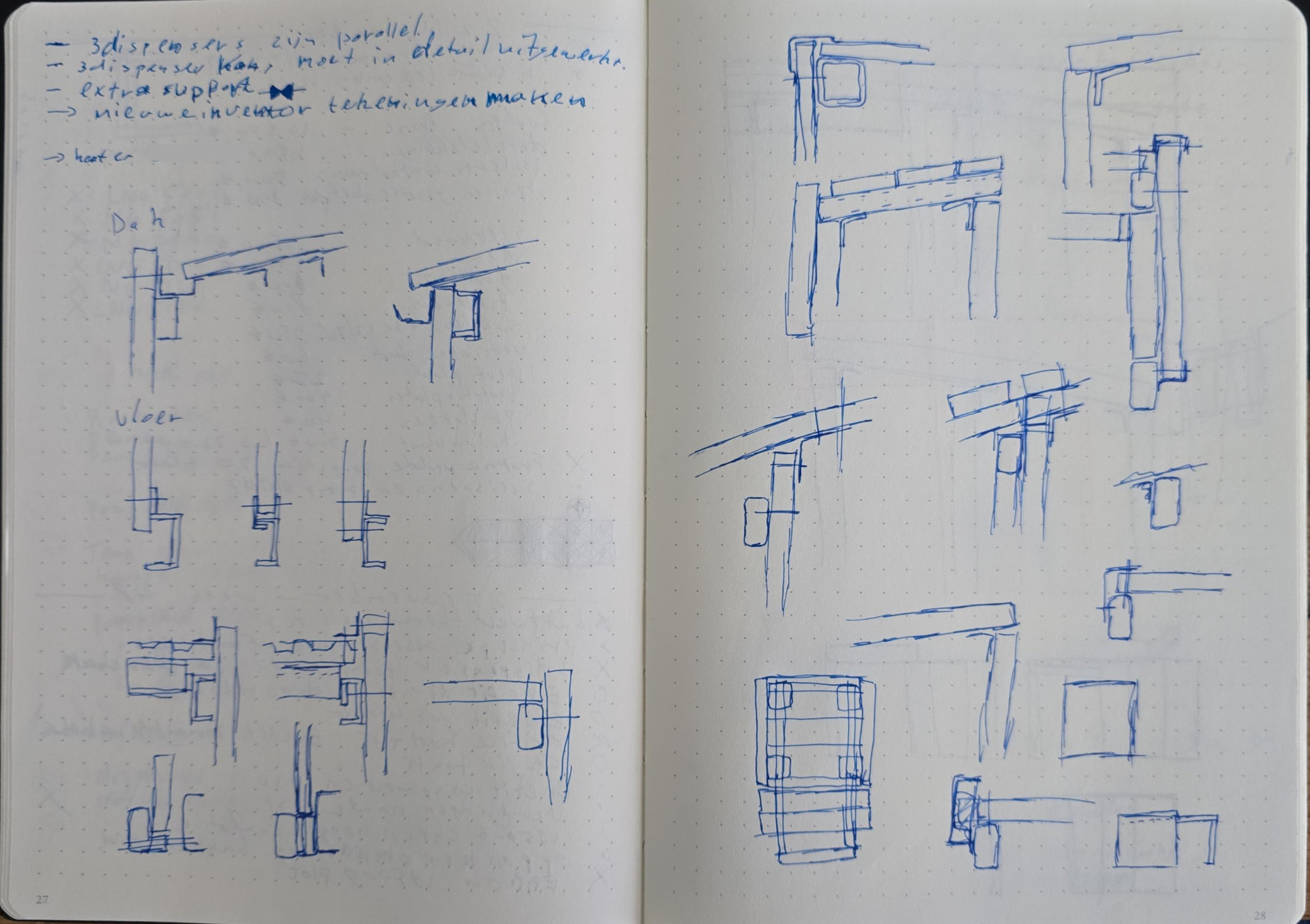
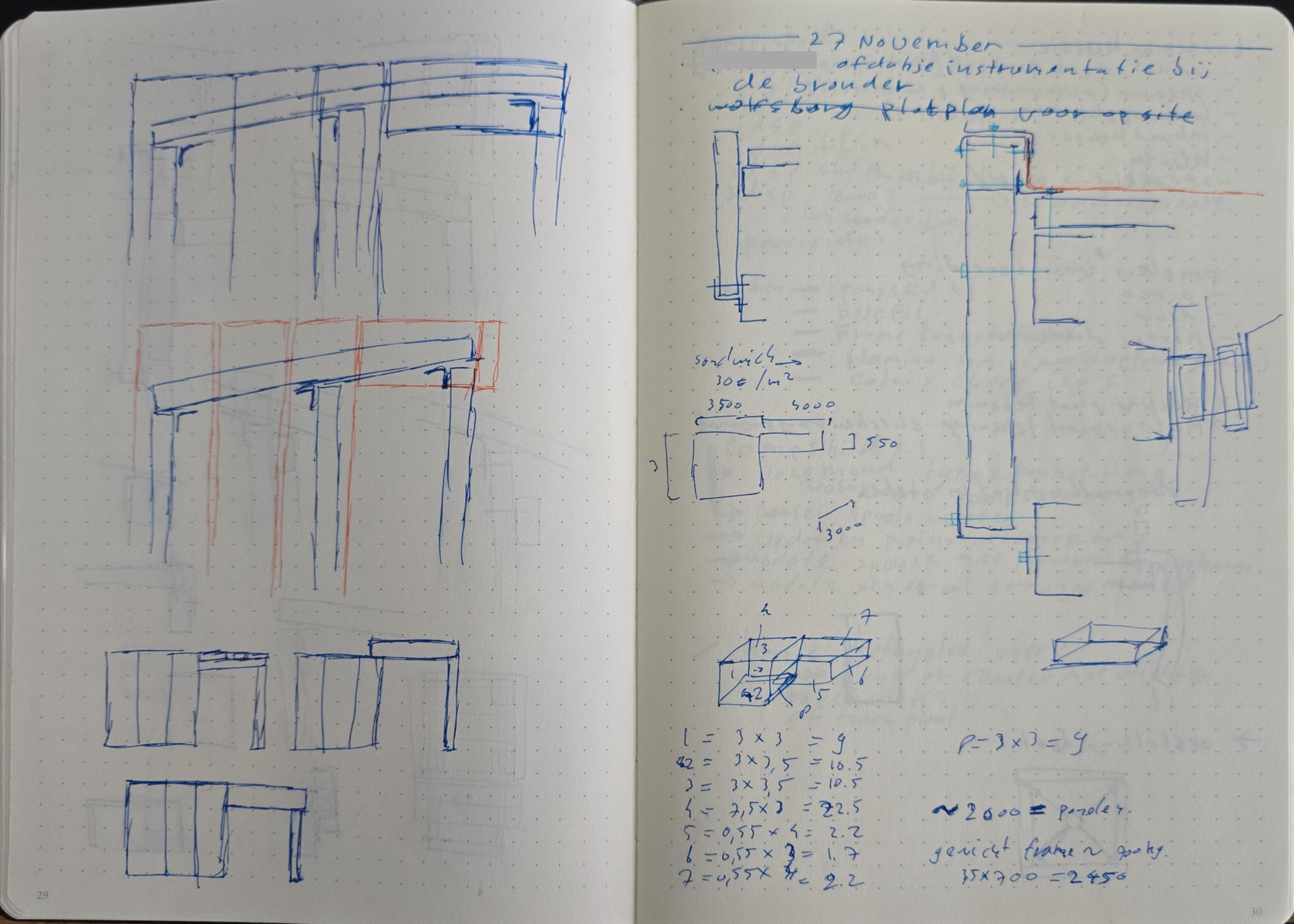
Block 7 04-2020 > 09-2020
130 pages A5/A4, Ipad Pro 11 2020
I got an Ipad pro 11 2020 with the Ipad pencil. Very expensive but also the best note/sketching experience in the realm of tablets. This post is mainly focused on the notes themselves, so let’s have a look at that.
It started with a somewhat less organized approach and an analogue to the physical notebook. an ivory A5 notebook. No more monthly logs or splits between projects and standardisation. I did switch to an A4 size template somewhere in the middle. The nice thing is that in a digital notebok i can add in a large page if that is needed for the sketch. and then go back to a smaller normal page.
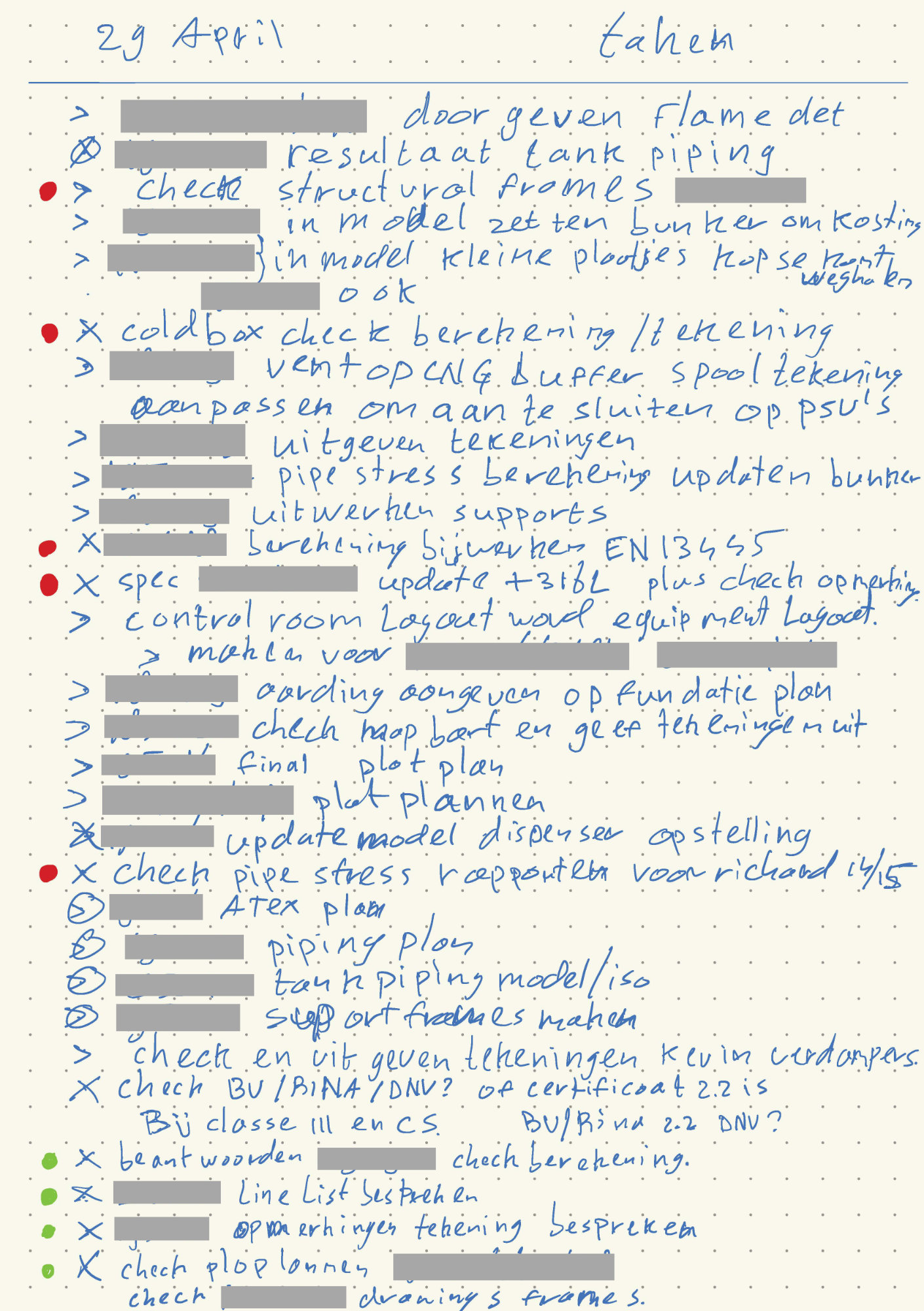

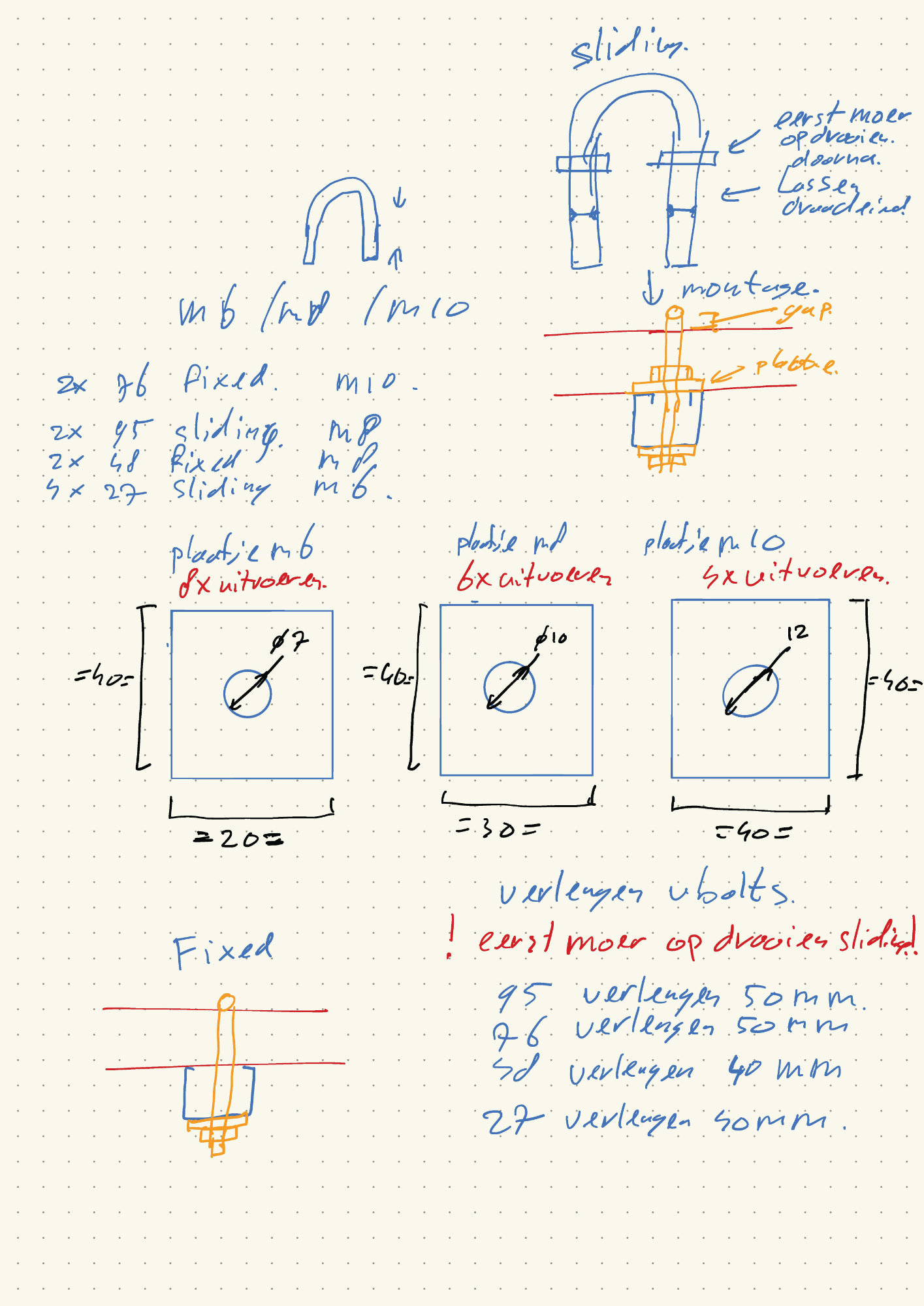
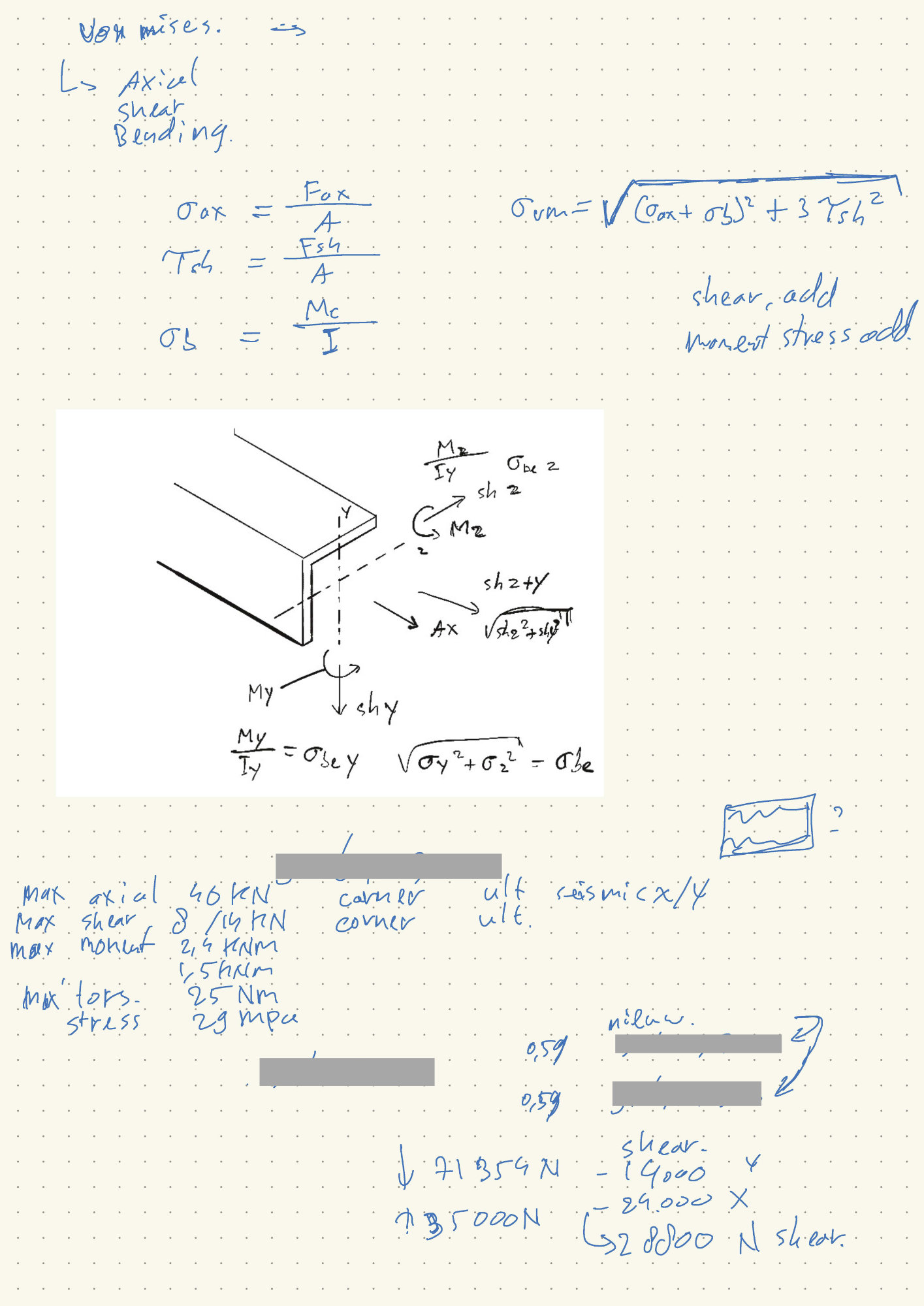
Block 8 09-2020 > 06-2021
159 pages A4, Ipad Pro 11 2020
I don’t remember why I made a new notebook here. Maybe it was because it was getting too large? Block 7 finished at 169MB. I also found an Isometric template, so sometimes I add in an Isometric page to draw out pipe routing for a pipe stress analysis. Math is also easier to insert and calculate, I can make and solve the formula using a different application and paste that into the notebook. Somewhere in Q2 of 2021 I got a burnout, funny how the precursors are already visible in 2020 as I look through my notes. I was working a lot less and you can really see the structure slip away in the notes. I didn’t have many weekly logs. I thought at the start my digital notes where still pretty organized/disciplined, but I can clearly see that the digital notes instantly lost some of the structure my paper notes had.
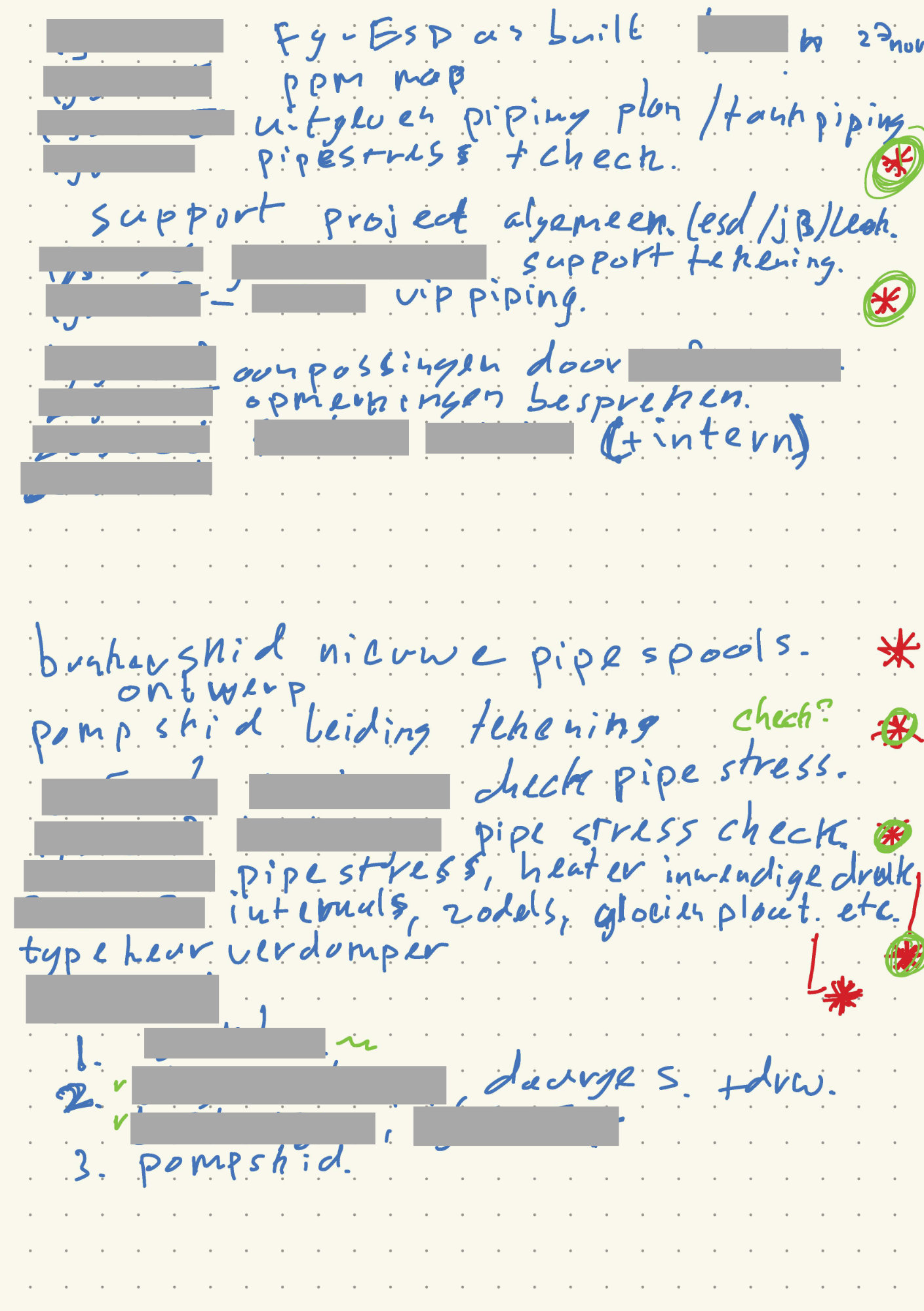
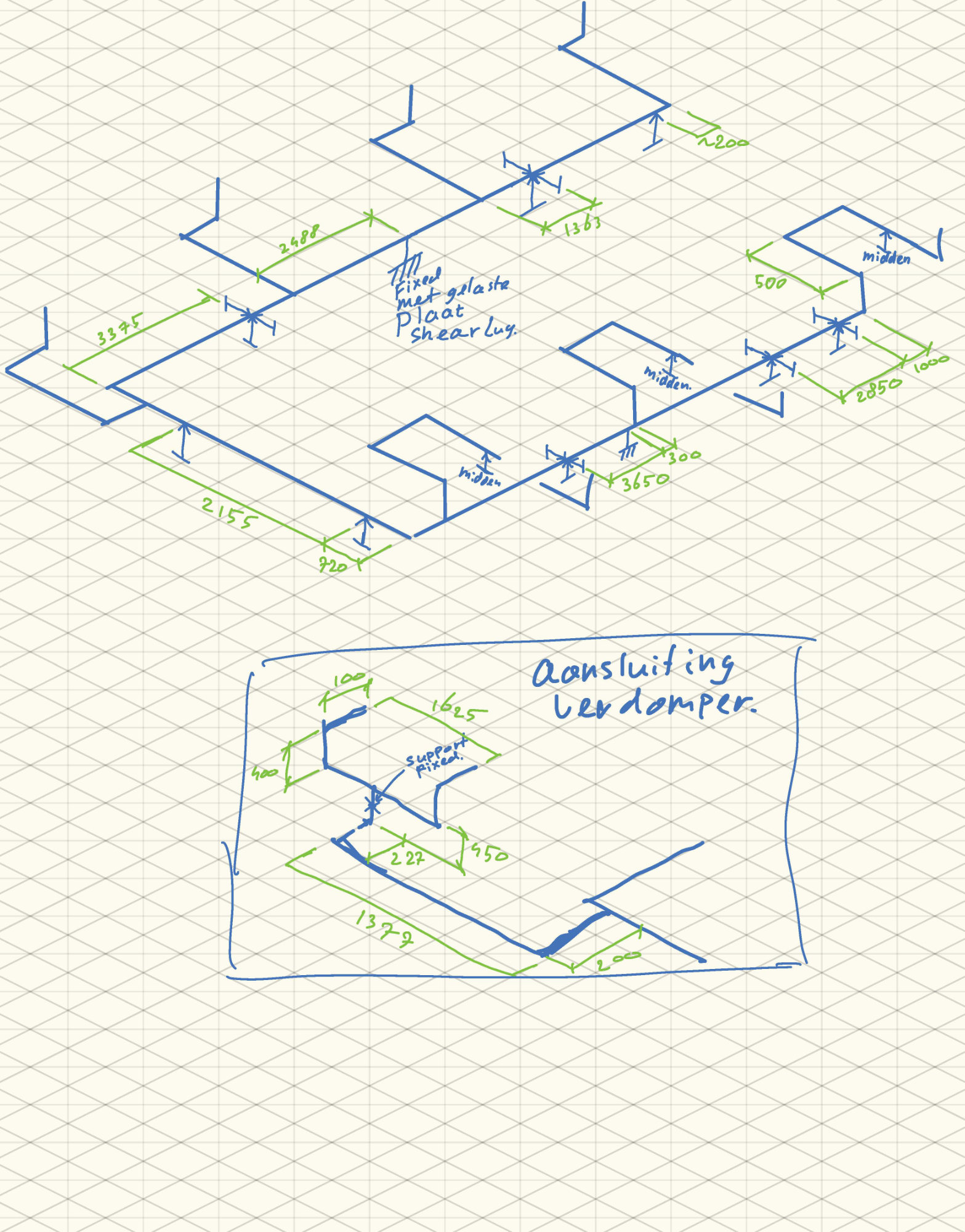
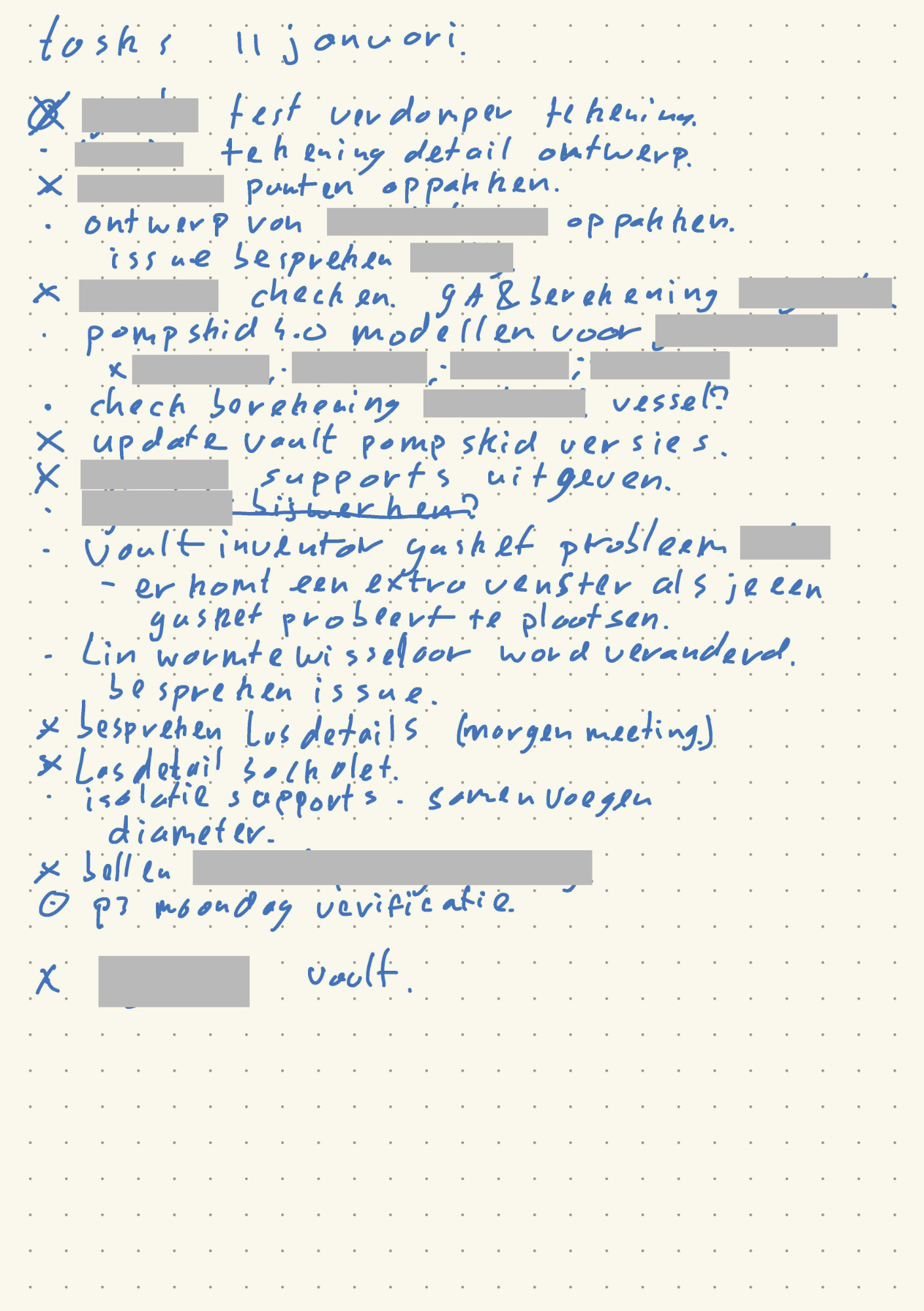
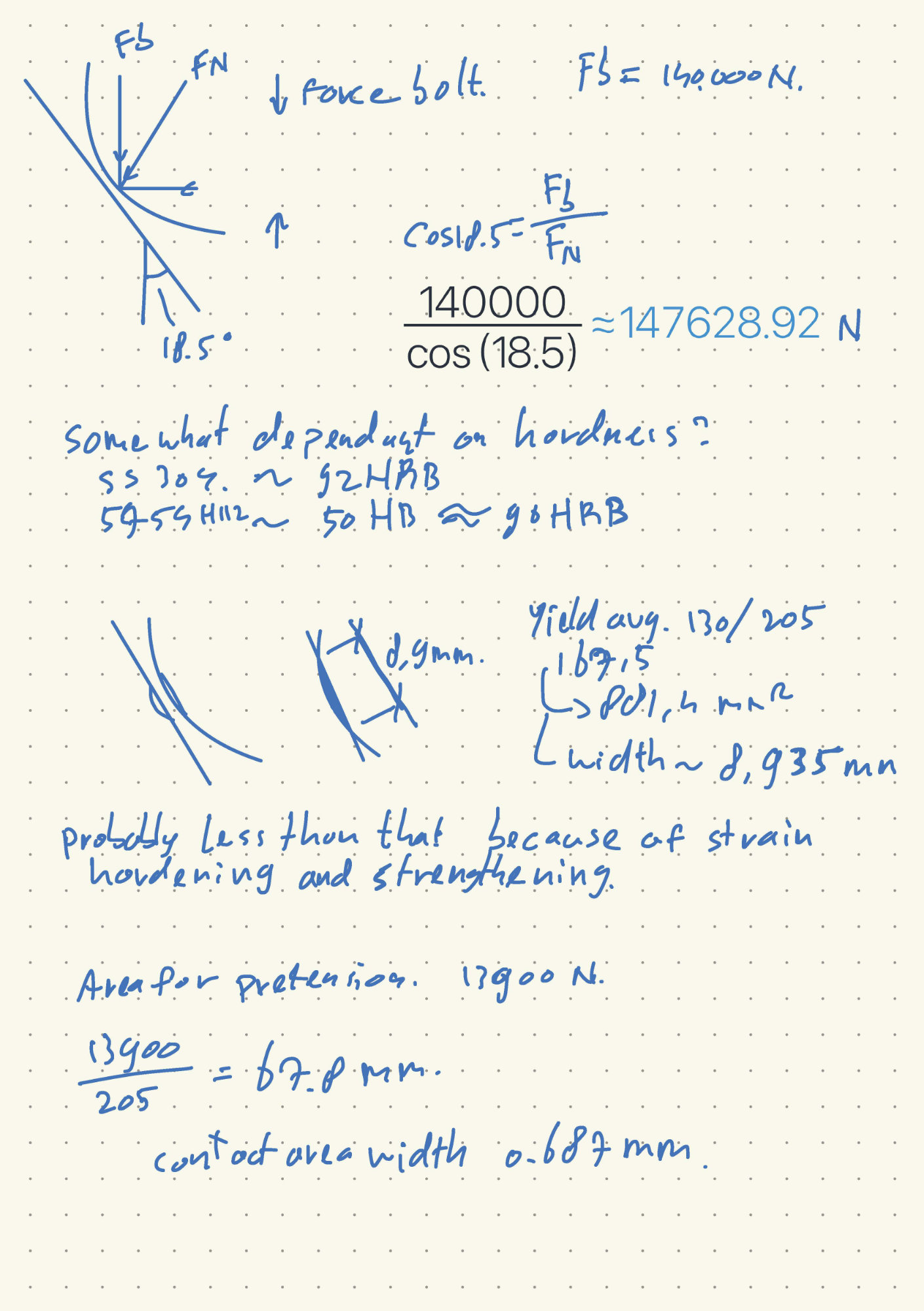
Recovering from burnout and Fallout
With my burnout my grip on everything loosened. They where some of my darkest days but also the period of my reflection and growth.
Block 9 07-2021 > 12-2021
548 pages A4 (about 30 written on), Ipad Pro 11 2020
In the aim of getting more structure (while recovering from a burnout) I bought a pretty big template with built in trackers, schedules and daily note pages. The system was not a bullet journal. I would plan out the week in the weekly page and then notes on the daily page. I didn’t make many notes though. But it was nice to have a small diary entry on every day, how it went.
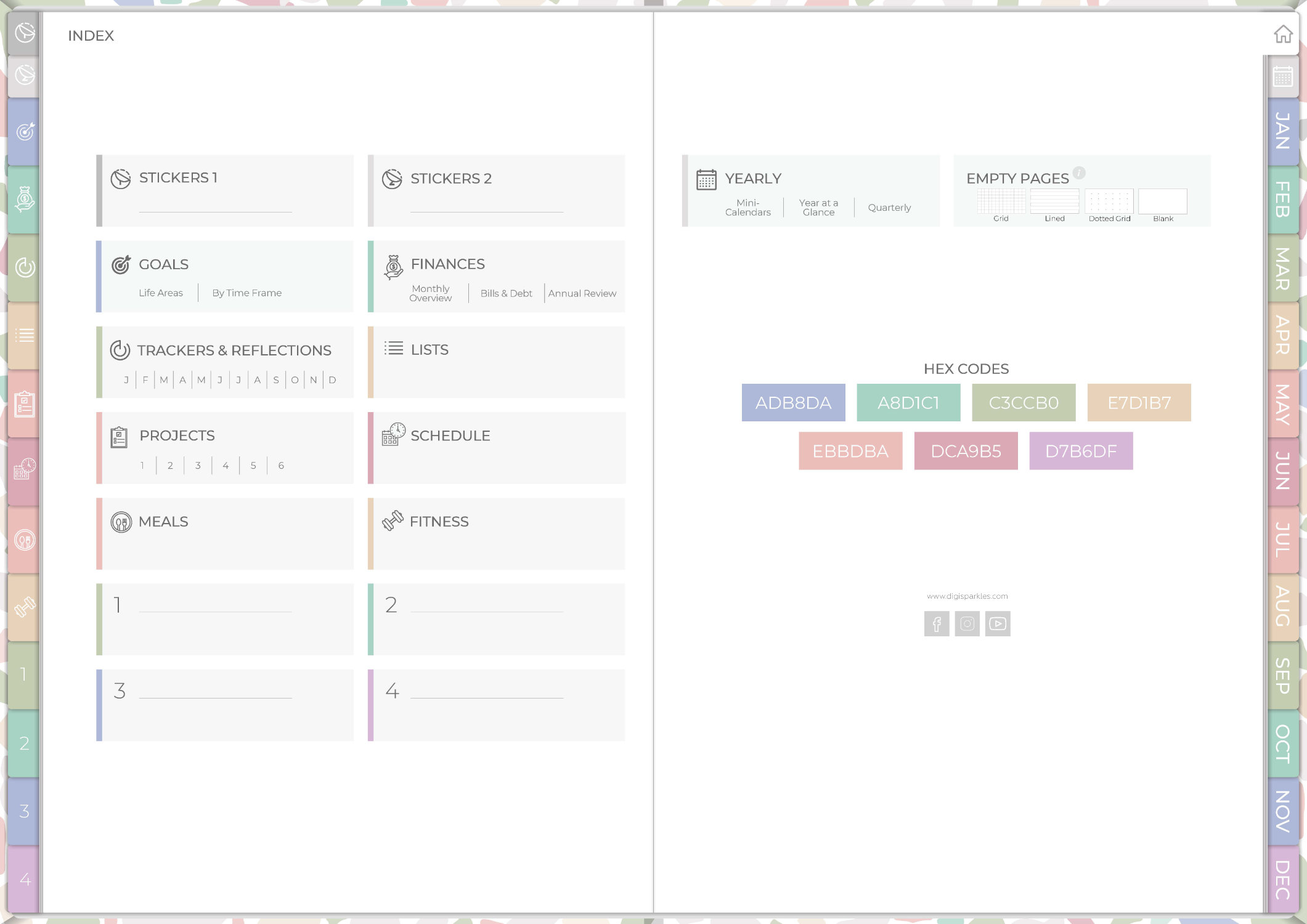

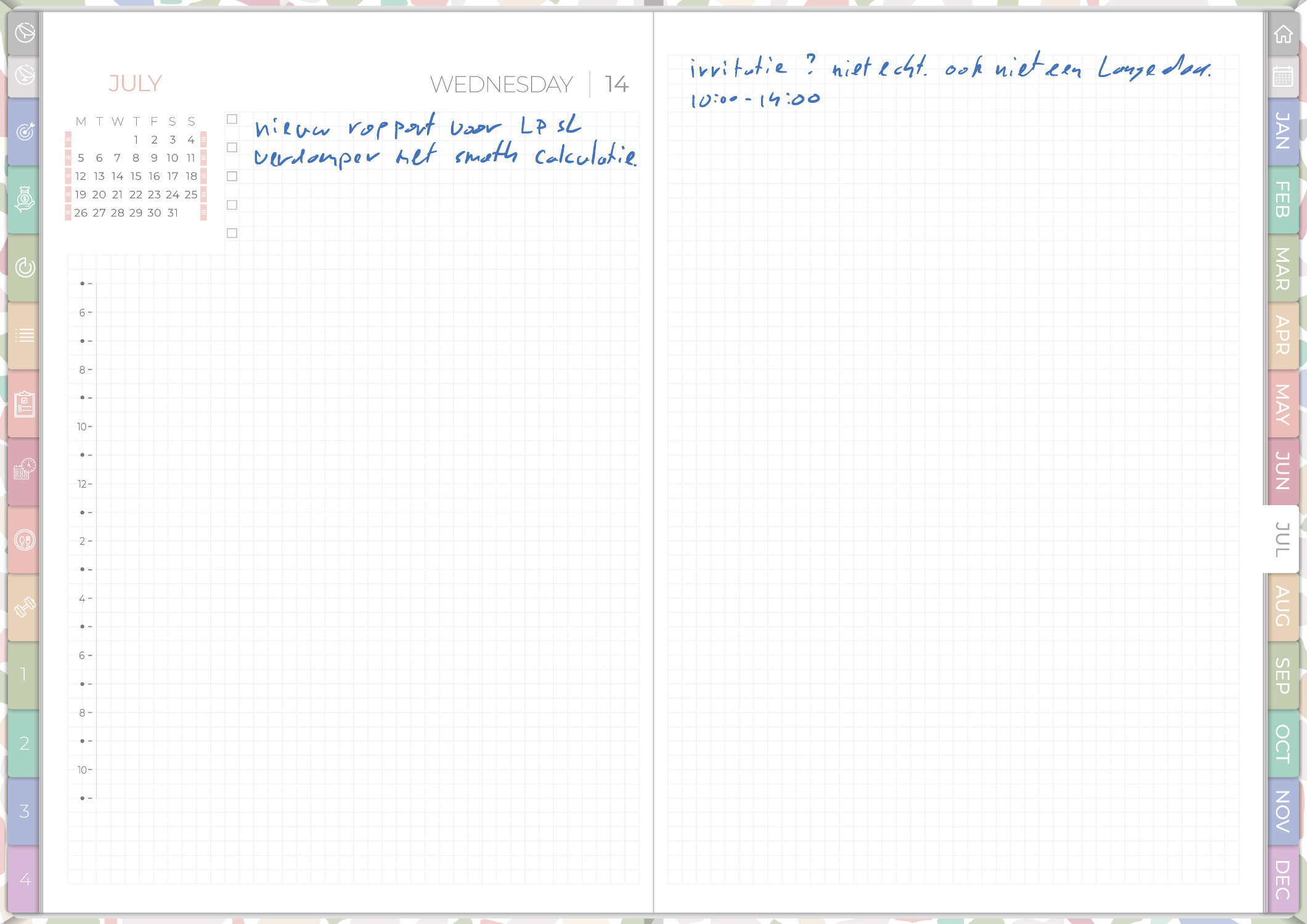
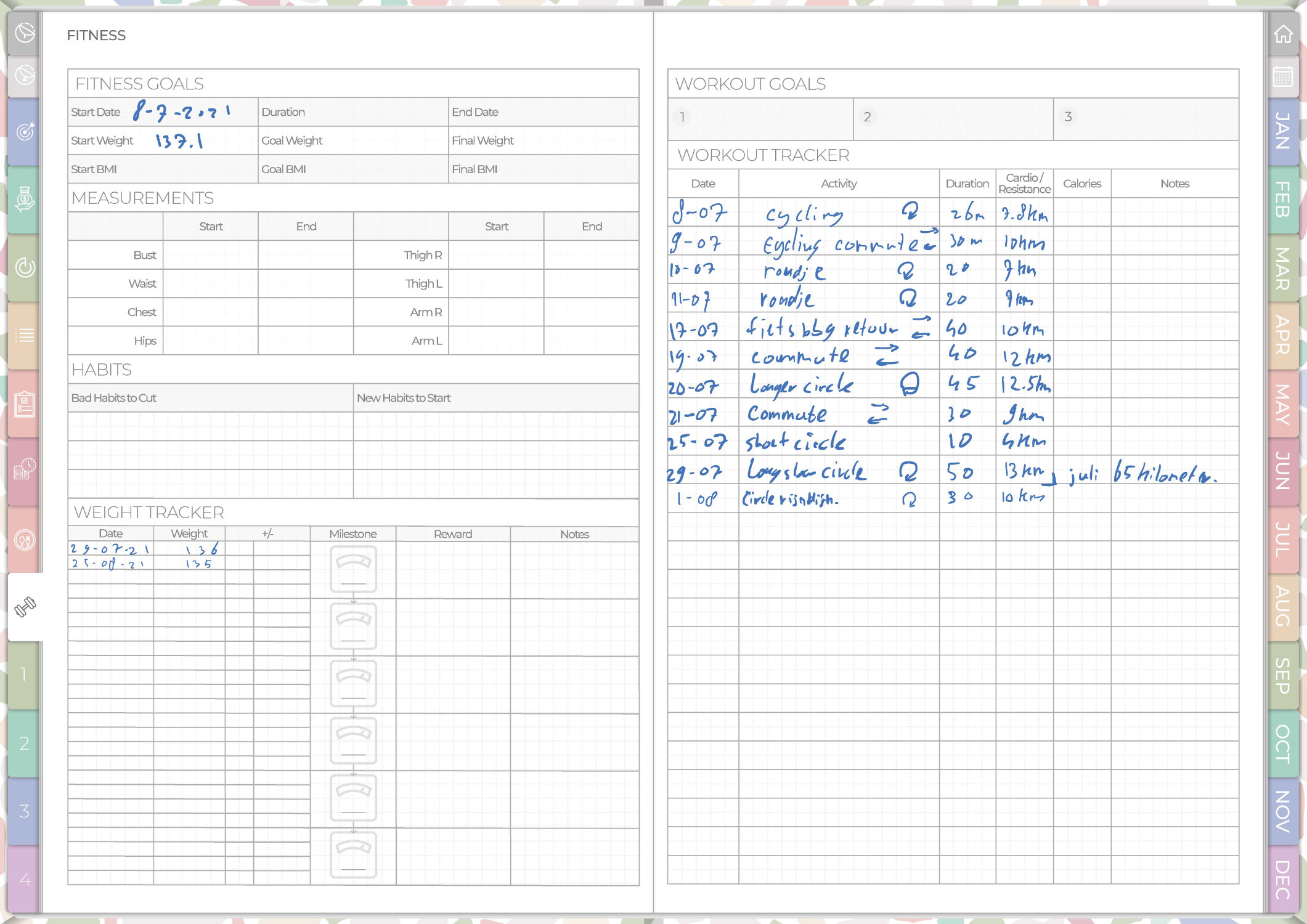
Block 10 2022
122 pages 2xA5 (94 notes), halfway switch to Ipad Pro 12.9 M1
The previous massive fixed structure notebook was a bit too much for me. But I still wanted to keep some structure in. This was also the moment I quit and started my own company (the site you are reading this on!). The nice thing about this template is that it’s not connected to a single year, I have stickers for each permutation of weeks to put together a monthly log. (that I didn’t really use afterwards) So back to the bullet journal, with a more consistent weekly logs whenever I was working on a project. The one thing that didn’t really work well is the links on the side of the pages. The pages they link to are already made. whenever I go into a new month, instead of making a new page, I have to move to that page. I forget it often.




Block 11 2023
56 pages 2xA5, Ipad Pro 12.9 M1
Worked a lot this year, but didn’t have that many pages of notes. Reading through it was not a lot of lists and mostly direct notes or sketches. there are a couple of weekly logs here and there, but in general just unstructured notes.



Block 12 01-2024 > 04-2025
47 pages 2xA5, Ipad Pro 12.9 M1
This is the latest digital notebook. Called planner 2024 but I’m still using it into 2025. A lot less notes as the pattern continues in the last couple of years. I am noticing I don’t need the notes as much if I work on a small amount of projects. Lets say 5 years ago I was working on multiple projects and then doing support work for a couple of other projects. I was the only pipe stress and pressure vessel calculator at that job. Right now I have very short term projects and a big project I work on for myself. Still though, tasks are slipping through the cracks. I am relying on my memory and that usually doesn’t go that well. My struggle at this point is also notes on my computer. I am using obsidian for writing and research.




Looking back
What worked
While I was actively using it. The bullet journal system worked really well in keeping track of things by moving it out of my head. When I get a call or an e-mail, I don’t act on it, but I write it down in my notebook and that automatically means I will get back to it. The weekly logs seem like a waste of time. Why would you go through and rewrite all the tasks, isn’t that a waste of time? But it is really helpful to just take a step back to look at the list of tasks you have open.
- I can reprioritize a task
- See if I need something to complete a task. Send out the question and continue on the list.
- Expedite on answers I haven’t gotten yet
- Soothe my mind whenever I feel overwhelmed, just look at the list.
What Didn’t
When making this post, I expected to see the drop in number of notes and organisation in the last years. I didn’t expect how much drop off there was going from paper to digital. It was a pretty sharp decline. Being self employed changed my workflow. Some of that morning startup time that I often relied on when making the notes. That also makes it more important to keep up with as I work in my home office. There are less projects I work on day to day, but more small tasks to keep track of:
- sending invoices
- Admin work for the business
- Paying invoices/taxes
- Acquiring new clients
Conclusion
The bullet journal system, or at least my simplified version of it, was worthwhile and I should figure out how to use it more consistently again. It wasn’t a straight revolution, it grew, peaked and then unraveled. Looking back I did learn that there are some things I just don’t use in a note taking system. Future log has been mostly empty. yearly or monthly planners have not been used. The thing that works is straight to the point monthly and weekly logs. With daily notes and comments. In between all the sketches and random things to jot down.
The Future
Right now I’m still working out how I want to continue. Especially the digital vs physical notes fight is still ongoing. The next post in this series will be about that!

